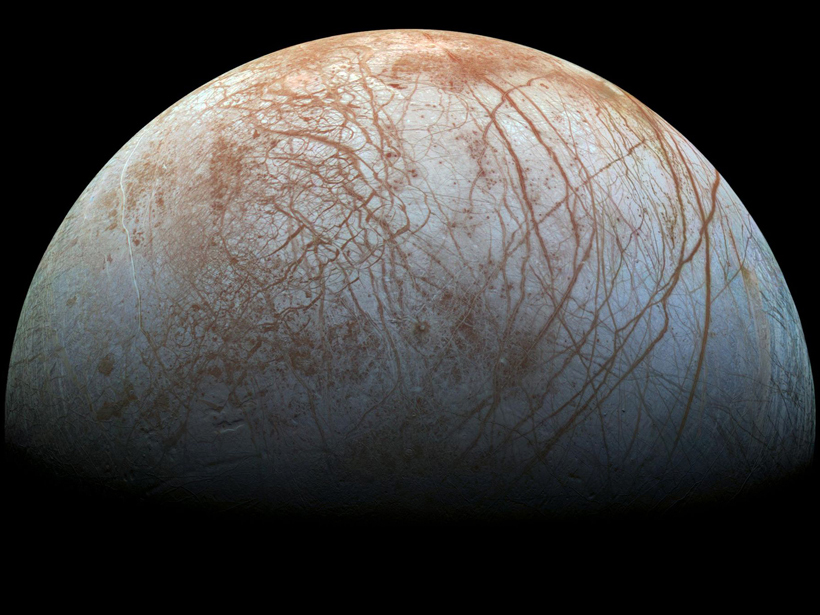Source: Journal of Geophysical Research: Space Physics
The thin oxygen atmosphere of Jupiter’s icy moon Europa has been the subject of speculation for more than 2 decades, ever since scientists deduced its existence after spotting the telltale glow of ultraviolet auroras.
Now Roth et al. report the results of a 5-month observation campaign by NASA’s Hubble Space Telescope, from late 2014 through spring 2015. By combining that data set with previous Hubble observations as far back as 1999, this study is the most detailed yet of Europa’s auroras.
On Earth, auroras are mostly driven by the Sun, as plasma particles from the solar wind stream toward the poles and collide with the atmosphere. But Jupiter has its very own sources: the volcanoes of its moon Io and the fast rotating magnetic field. The plasma that the volcanoes spew gets trapped by Jupiter’s magnetic field, forming a disk of plasma. Because Jupiter’s magnetic field—like Earth’s—is tilted, this plasma disk is also tilted. This tilt creates a choppy environment for the moons of Jupiter like Europa, whose orbital path weaves in and out of the disk.
The team found that this weaving has a big influence on the strength of the auroras. When Europa is deep inside the disk, plowing through the plasma, the auroras light up the strongest. The brightest spots of aurora were at the poles, and they tend to be stronger at the pole that is facing the densest layer of the disk.
Other information the team gleaned from the data includes determining how much oxygen is in Europa’s atmosphere to better precision than ever before by measuring the relative strengths of different emission lines. Also, on several occasions, Hubble had a view of Europa while it was in Jupiter’s shadow—but nothing much changed, which suggests that the Sun doesn’t play much of a role in the auroras.
Many mysteries remain. One is that unlike on Io, Hubble didn’t see strong auroras near the equator of Europa. Another is that the aurora on the right half of Europa, as seen from Earth, is consistently brighter than that on the left side. One explanation for the difference could be that the local time on Europa affects the aurora. From Earth’s vantage point, the right-hand side of Europa corresponds to late afternoon and dusk, whereas the fainter left-hand side coincides with dawn. (Journal of Geophysical Research: Space Physics, doi:10.1002/2015JA022073, 2016)
—Mark Zastrow, Freelance Writer
Citation: Zastrow, M. (2016), Hubble gazes at Europa’s Aurora, Eos, 97, doi:10.1029/2016EO047887. Published on 17 March 2016.
Text © 2016. The authors. CC BY-NC 3.0
Except where otherwise noted, images are subject to copyright. Any reuse without express permission from the copyright owner is prohibited.

